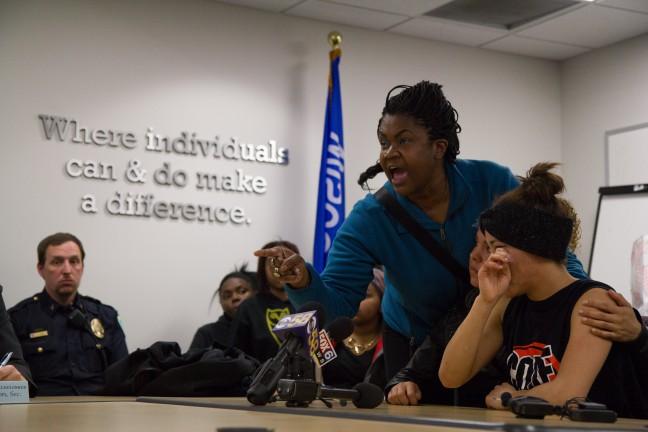Friday’s tragic shooting of Tony Robinson on Williamson Street sounded like yet another refrain in an already horrifying song. Again, a white police officer had a confrontation with a black youth and once again, the police office shot the black teen. I don’t know if it was justified or not. The state is investigating, and I eagerly anticipate their findings. Regardless of whether Madison Police Department officer Matt Kenny was put into a terrible position or if he acted unnecessarily aggressive, the shooting offered a glimpse into the deeper problems in our community. For many, the shooting death of Tony Robinson was a deeply saddening reminder that Madison, like cities across the country, has a race problem. The problem isn’t that we have a diverse population; it’s that we pretend that the core problems don’t exist or we as a community are uncomfortable with potential solutions.
In 2013, the Race to Equity report held a mirror up to Madison, and we saw how ugly some parts of our city can be. Madison may consistently be rated as one of the best places in the country to live … unless you happen to be black. The report brought forth glaring and widening divisions between black residents and white residents in Madison. Across the board, Race to Equity highlighted widespread and pervasive differences between racial groups that are lasting across generations.
While arrest rates have dropped for black residents over the past 10 years, poverty is still crippling. Black residents in Madison are between five and six times more likely to be poor than white residents and have a similar level of unemployment disparity. If we look just at black children, nearly 75 percent live in poverty compared to 5 percent of white children.
Our community perpetuates this cycle of poverty and unintentionally creates this clear and obvious schism. Our education system disproportionately punishes black students, suspending a black student 15 times more often than a white student even as black students only make up 20 percent of Madison public schools. Additionally, our Child Protective Services system is 6.6 percent more likely to refer black children to foster care than white children, and while our black youths make up 10 percent of the Dane County teenage population, they comprise more than 60 percent of our detention population.
Placing these horrifying Madison statistics into the national context, the situation is grim. National research reveals that black teens are 21 times more likely to be shot in a confrontation with police than a white teen. Yes, I said 21 times more likely.
Earlier this week, the Race to Equity group specifically highlighted that the recent death of Robinson “is not disconnected from our community’s inability to assure a level playing field for all our children and families.”
Therefore, we must focus on improving our communities to alleviate the disparities in Madison. We need more efforts from the city, especially in light of Robinson’s death. Efforts to build trust between the police department and marginalized communities through initiatives like community-based policing teams and the potential implementation of body cameras will be essential in this process, but there are numerous other policy areas that the mayor and Common Council need to address. Food deserts, poorly maintained public facilities, limited public transportation and the growing digital divide are only a few of the many policy issues that face marginalized communities where the city can — and should — provide solutions.
We have a lot of work to do as a community, but if we recognize and accept our problems, we can address them. Pretending Madison is a liberal paradise is a gross mischaracterization. To get there, we need leadership from the mayor’s office, sound policy from the Common Council, constant participation from our communities and unwavering transparency and engagement from our police department.
Madison can, indeed, be the best place to live for everyone, but it will continue to take a communal effort.
Adam Johnson ([email protected]) is a Master’s candidate at the La Follette School of Public Affairs.














